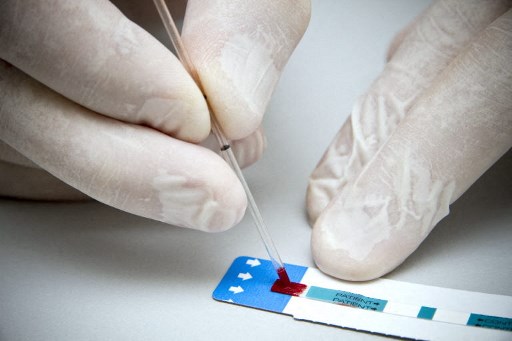
Suddenly, you feel a sharp pain on one side in the chest that may spread to the neck, shoulder, or abdomen. As well as difficulty breathing, shortness of breath and a dry cough. Characteristic symptoms of pneumothorax. “They can explode at any time, even in times of rest,” Prof. Stefan Juno, MD, pulmonologist at the University Hospital Rennes identifies.
This pathology mainly affects young people aged 15-30, especially smokers. This is called primary pneumothorax. Others, fewer in number, can be due to violent trauma such as car accidents or elderly people who already have respiratory problems. » The University Hospital Rennes treats about sixty cases annually. The reason: air bubbles form in the pleural cavity (pleura) surrounding the lungs, no longer allowing them to function normally.
The new device proposed by the University Hospital Rennes and the Lorient and Saint-Malo hospitals is less invasive and no longer requires hospitalization for several days. © Western France
Outpatient clinics
“The most common treatment is, after the pneumothorax is confirmed by X-ray, inserting a drain into the thorax to empty the air,” Professor Juno explains. “The gesture does not present any particular difficulties but requires several days of hospitalization.”

Professor Stefan Juno, a pulmonologist at the University Hospital Rennes and one of the leaders of the Pneum Ambu Study for the Innovative Management of Pneumothorax. © Western France
The practitioner from Rennes, together with colleagues from Saint-Malo and Lorient Hospitals, including Dr. Laurent Sohir, has been working for several years on a new, less invasive approach to treatment that, above all, no longer requires hospitalization. “Outpatient treatment with very satisfactory results. In particular, we had patients who, after a daytime pneumothorax, were able to resume their normal lives the same evening, including a musician who was going to give a concert. » Restrictions only: Avoid diving or flying in the following weeks.
Hospitalization was avoided in 8 out of 10
How it works ? “We use a drain that is only 2.8 mm in diameter which is inserted into the rib cage with a very fine catheter. It is much less invasive than conventional drainage and does not even require stitches to close the wound.”. The drain is connected to a non-return valve system connected to the patient’s stomach, allowing air to escape from the chest cavity while preventing it from entering.
Only 20% of patients who tried this device required hospitalization. Others were able to return home on the same day of the intervention. » Knowing that one is always better at home than in the hospital room. In 40% of cases, pneumothorax disappears within 48 hours and within 96 hours in 40% of other cases. » Another feature: This procedure can be performed by emergency physicians and no longer requires the mandatory presence of a pulmonologist. » Healing was confirmed by a new x-ray.
Professor Juno, with colleagues from Saint Malo and Lorient, has just begun a randomized study to provide academic support for this therapeutic innovation that has already proven itself in the field. We will offer people who have suffered from pneumothorax to benefit from this technique. »






